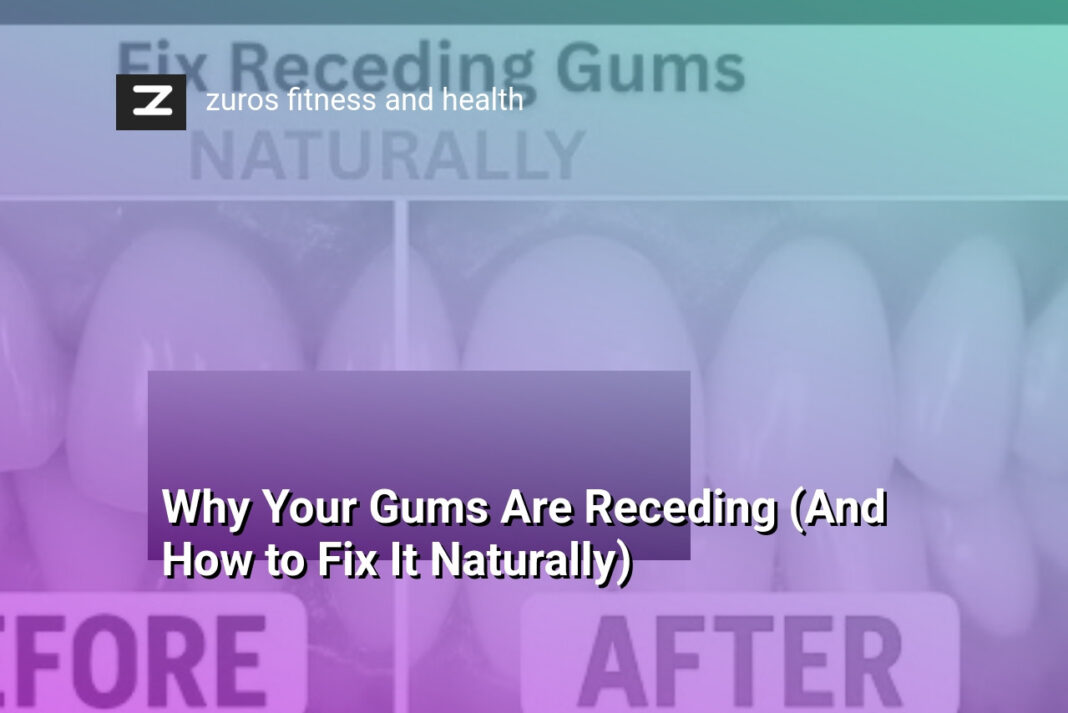The Bottom Line:
- I discovered that certain foods like berries, coffee, and tomato-based sauces contain chromogens and acids that can dramatically discolor tooth enamel.
- My research revealed that dark-colored condiments such as balsamic vinegar and soy sauce pose significant risks to maintaining a bright, white smile.
- I learned that strategic rinsing with water immediately after consuming staining foods can substantially reduce potential tooth discoloration.
- Understanding the chemical composition of different foods helped me recognize how tannins and acidic properties contribute to tooth staining mechanisms.
- I found that implementing consistent oral hygiene practices, including mindful eating and regular brushing, is the most effective strategy for preserving dental aesthetics.
Berries: The Colorful Culprits of Tooth Staining
The Chromogen Culprits in Berry Varieties
Berries are notorious for their tooth-staining potential due to their high concentration of chromogens, natural pigment compounds that easily adhere to dental enamel. Blueberries, blackberries, and cherries are particularly problematic, with their deep, rich colors serving as warning signs of potential discoloration. These fruits contain intense pigments that can quickly penetrate tooth surfaces, leaving behind stubborn stains that are challenging to remove through standard brushing.
Understanding Berry Pigmentation Mechanisms
The staining process occurs when the chromogens in berries interact with tooth enamel’s porous surface. Dark-colored berries like blackberries and elderberries have particularly strong pigmentation capabilities, creating lasting discoloration even after brief contact. The acidic nature of these fruits further compounds the staining effect by temporarily softening tooth enamel, making teeth more susceptible to pigment absorption. This vulnerability means that even small quantities of berry consumption can result in noticeable dental discoloration over time.
Practical Prevention Strategies
Mitigating berry-induced tooth staining requires proactive measures. Immediately rinsing the mouth with water after consuming berries can help minimize pigment adherence. Using a straw when drinking berry juices can reduce direct contact with teeth, while consuming these fruits as part of a meal can help neutralize their staining potential. Additionally, waiting at least 30 minutes before brushing after berry consumption allows saliva to naturally begin remineralizing tooth enamel, reducing the risk of permanent staining. Dental professionals recommend alternating berry intake with water or calcium-rich foods to help counteract potential discoloration effects.
Coffee’s Complex Impact on Dental Appearance
The Chemical Composition of Coffee and Tooth Discoloration
Coffee contains complex chemical compounds that directly interact with dental enamel, creating significant staining potential. Tannins, a key component in coffee, are polyphenolic molecules that easily adhere to tooth surfaces, creating persistent brown and yellow pigmentation. These organic compounds have a strong molecular attraction to dental proteins, allowing them to penetrate microscopic enamel pores and create long-lasting discoloration.
Acidity and Enamel Vulnerability
The acidic nature of coffee plays a critical role in tooth staining mechanisms. With an average pH between 4.85 and 5.10, coffee creates an environment that temporarily softens tooth enamel, making teeth more susceptible to pigment absorption. This increased porosity allows chromogenic compounds to penetrate deeper into dental structures, accelerating the discoloration process. Regular coffee consumption can progressively weaken enamel’s protective barrier, making teeth more prone to permanent staining and structural degradation.
Mitigating Coffee’s Staining Effects
Dental professionals recommend several strategies to minimize coffee’s staining potential. Drinking water immediately after consuming coffee can help neutralize acid and rinse away pigment-rich residues. Using a straw positioned toward the back of the mouth reduces direct contact between coffee and tooth surfaces. Additionally, consuming calcium-rich foods or drinking milk with coffee can create a protective barrier that minimizes direct staining interactions. Regular professional dental cleanings and maintaining consistent oral hygiene practices can also help counteract the cumulative effects of coffee-induced discoloration.
Tomato-Based Sauces and Their Staining Potential
The Chemistry Behind Tomato Sauce Staining
Tomato-based sauces are notorious for their significant tooth-staining potential due to their unique chemical composition. The high acidity of tomatoes, combined with intense chromogens, creates a perfect environment for dental discoloration. These sauces, commonly found in pasta dishes, pizzas, and various Mediterranean cuisines, contain powerful pigment-producing compounds that can rapidly attach to tooth enamel.
Acidic Properties and Enamel Vulnerability
The low pH of tomato sauces plays a critical role in their staining mechanism. Acidic substances temporarily soften tooth enamel, making teeth more porous and susceptible to pigment absorption. Red sauces like marinara, arrabbiata, and bolognese are particularly problematic because their deep red color contains concentrated chromogen molecules that easily penetrate microscopic tooth surface irregularities. Repeated exposure to these sauces can progressively darken tooth color, creating noticeable discoloration over time.
Mitigating Staining Risks from Tomato Dishes
While completely avoiding tomato-based sauces isn’t practical, several strategies can minimize their staining potential. Consuming leafy green vegetables alongside tomato dishes can create a protective barrier on teeth, reducing direct pigment contact. Drinking water immediately after eating can help rinse away acidic residues and prevent prolonged enamel exposure. Additionally, waiting at least 30 minutes before brushing teeth allows enamel to re-mineralize, preventing potential damage from aggressive brushing when the surface remains temporarily softened by acidic compounds.
Balsamic Vinegar: A Hidden Threat to Tooth Enamel
The Acidic Nature of Balsamic Vinegar
Balsamic vinegar’s deep, rich color and highly acidic composition make it a significant threat to tooth enamel. Unlike lighter vinegars, balsamic contains concentrated pigments that can quickly adhere to dental surfaces. The low pH level of this condiment actively softens tooth enamel, creating microscopic vulnerabilities that make teeth more susceptible to staining and discoloration.
Chemical Interactions with Dental Surfaces
When balsamic vinegar comes into contact with teeth, its acidic properties begin to break down the protective mineral layer of tooth enamel. This erosion process creates tiny pores and roughened surfaces that trap chromogenic compounds more easily. Dark-colored vinegars like balsamic have an enhanced ability to penetrate these newly created microscopic spaces, leading to more pronounced and persistent tooth staining compared to lighter-colored condiments.
Strategies for Minimizing Dental Damage
Mitigating the staining potential of balsamic vinegar requires strategic consumption and immediate oral care. Professionals recommend diluting balsamic vinegar with water or olive oil to reduce its direct contact with teeth. Rinsing thoroughly with water immediately after consuming balsamic-dressed foods can help neutralize acids and prevent prolonged exposure. Additionally, waiting at least 30 minutes before brushing teeth allows enamel to re-mineralize, reducing the risk of further damage during mechanical cleaning. Consuming calcium-rich foods alongside balsamic vinegar can also help counteract its acidic effects and provide protective minerals to tooth surfaces.
Preventative Strategies for Maintaining a Bright Smile
Strategic Oral Hygiene Techniques
Maintaining a bright smile requires proactive dental care strategies that go beyond basic brushing. Professional dental cleanings every six months can help remove surface stains and prevent deep discoloration. Using whitening toothpaste with mild abrasives can gently polish tooth surfaces, reducing the likelihood of pigment accumulation. Electric toothbrushes with oscillating heads provide more effective plaque removal and can help prevent stain-causing bacteria from settling on tooth enamel.
Protective Dietary Interventions
Implementing strategic dietary practices can significantly minimize tooth staining risks. After consuming chromogen-rich foods like berries or tomato sauces, immediately rinsing with water helps neutralize acidic environments and wash away potential staining compounds. Incorporating calcium-rich foods such as cheese and yogurt can create a protective barrier on tooth enamel, reducing the absorption of pigmented substances. Additionally, consuming crunchy vegetables like carrots and celery can naturally scrub tooth surfaces, acting as a mechanical cleaning mechanism during meals.
Advanced Protective Measures
Consider using a straw when drinking potentially staining beverages like coffee, tea, and red wine to minimize direct contact with teeth. Developing a post-meal oral care routine that includes rinsing, brushing, or using an antiseptic mouthwash can interrupt the staining process before pigments can deeply penetrate tooth enamel. Wearing protective dental guards during activities that might expose teeth to staining substances and maintaining consistent hydration can further support overall dental health and prevent discoloration.





